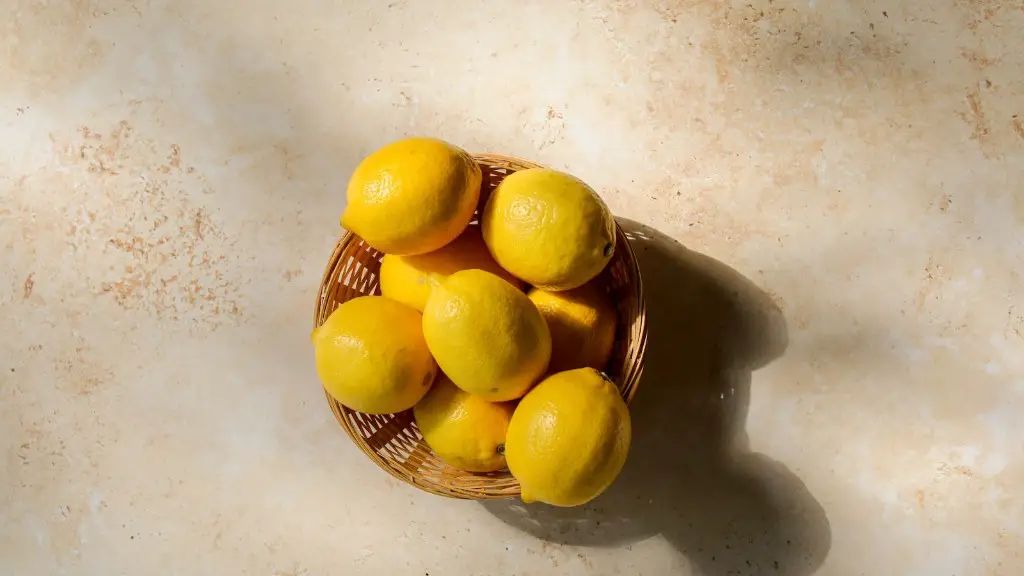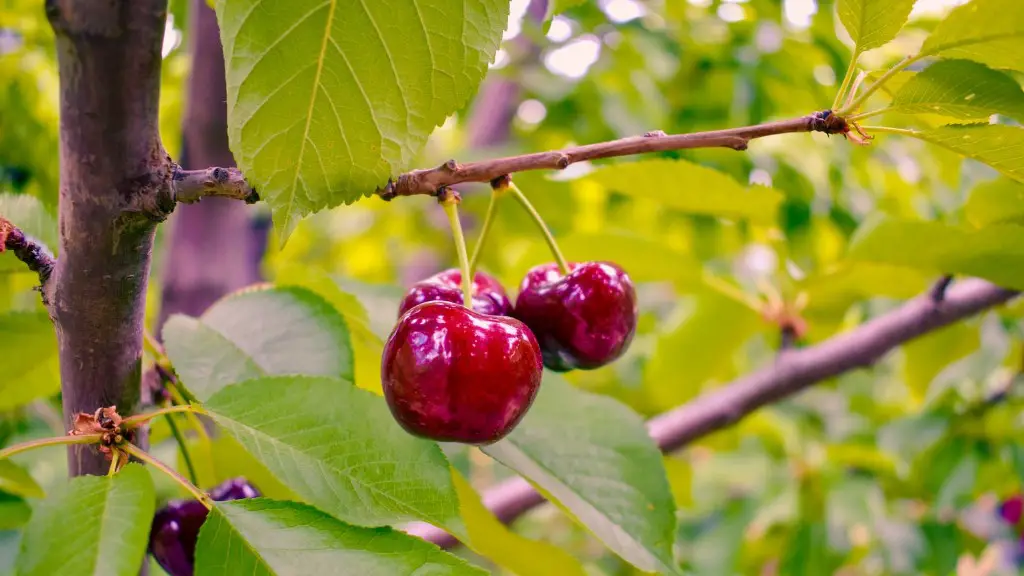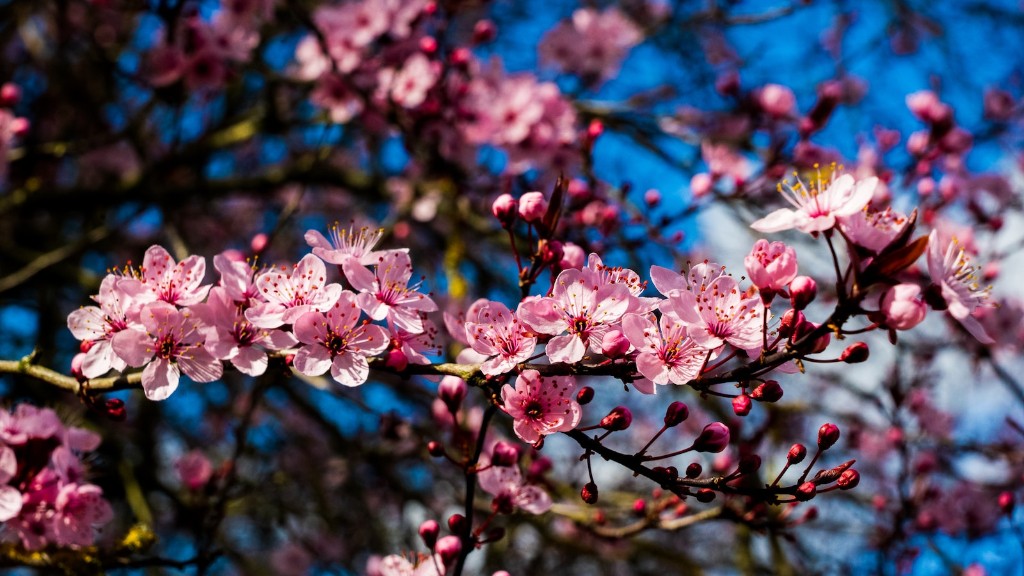The Hass Avocado Tree is an outstanding variety that produces an abundance of delicious, high-quality avocados. This tree is well-suited for commercial production, home gardens and landscapes, as it produces good-sized fruits over and over again. It is easy to care for, and can tolerate a range of climates and soils. For these reasons, it has become one of the most widely planted varieties of avocado trees.
A fully mature Hass avocado tree can reach heights of 15 to 20 feet with a spread of up to 15 feet. The leaves of the tree are dark green with a glossy finish. The flowers of the tree are small, white, and fragrant. The fruits produced by the tree are oval-shaped and have a green-brownish skin. The flesh of the fruit is a pale, creamy yellow and has an unmistakably buttery flavor.
In order to get the best results from an avocado tree, it is important to provide it with the right conditions. Avocado trees require plenty of sunlight, so a location that gets at least 6 hours of direct sunlight is ideal. Additionally, the tree should be planted in well-draining soil, as it is susceptible to root rot in waterlogged soil. Finally, the tree should be watered regularly, although it should not be over-watered. Mulching the soil can help to retain moisture and keep the roots cool.
When it comes to pruning, the Hass avocado tree should only be lightly pruned. This variety has an open, upright growth habit and should be pruned early in its life to maintain the structure. It is important to not over or under prune, as this can lead to fruit production issues, and can also weaken the tree. Pruning should be done during the dormant season, when the tree is not actively growing. During the summer months, light pruning is recommended to remove any dead or damaged growth, as well as any water shoots.
Companion planting is also important for proper care and maintenance. A Hass avocado tree should not be planted near other fruit trees, as this can reduce the amount of fruit produced. Instead, it should be planted with other trees such as pines, eucalyptus, or palms, as these can provide protection from wind and heat. Additionally, it should be planted near nitrogen-fixing plants such as legumes, as these can help to increase the fertility of the soil.
Overall, the Hass avocado tree is a delicious, easy-to-care-for variety that produces an abundance of delicious fruits. It is well-suited for commercial production, home gardens and landscapes. When properly cared for and planted with companion plants, it can reach heights of 15 to 20 feet and can produce good-sized fruits year after year.
How to Harvest Hass Avocado Trees
Harvesting Hass Avocado trees is a rewarding activity that can be done at home. It is recommended to only harvest mature tree when the fruits turn a dark green or blackish color. It is important to remember to not leave the fruits on the tree for too long, otherwise, it will rot and drop to the ground. Additionally, fruit harvesting should be done with care, as the fruits are delicate and can easily be damaged.
The easiest way to harvest Hass avocados is to pluck them from the tree with a gentle twisting motion. Once the fruit has been removed, it should be kept in a shady place and allowed to fully ripen. This usually takes a few days, and the fruit should not be left too long, as it can rot and become uneatable. Additionally, the fruits should be handled gently, as they are delicate and can be damaged easily.
After the avocado fruits have ripened, they should be stored properly to maintain their freshness and taste. The best way to do this is to store the fruits in a sealed container in the refrigerator. This will help to prolong the shelf-life, and the fruit can be kept for up to a month in a refrigerator. Additionally, it is important to prevent the fruits from becoming over ripe, as this can lead to mushy texture, off-flavors, and bad aroma.
Pests and Diseases of Hass Avocado Trees
Hass avocado trees are relatively disease-resistant and pest-resistant, but it is important to be aware of potential problems that may arise. Diseases such as silver mite, root rot and pythium can cause serious damage to the tree, and should be treated quickly when detected. It is important to identify the pest or disease early, as this can help to prevent it from spreading to other plants. Additionally, it is important to regularly check the tree for signs of damage, as this can help to identify potential problems early.
In terms of pests, the most common pests of Hass avocado trees are aphids and scale insects. Aphids are small sap-sucking insects that can damage the foliage of the tree, while scale insects are small, hard-shelled insects that feed on the sap of the tree. To prevent and treat these pests, it is important to keep the tree well-pruned and regularly fertilized. Additionally, it is important to regularly check the tree for signs of infestation, and to use insecticides or contact insecticides to treat the infestation.
Growing Hass Avocado Trees in Containers
Hass avocado trees can be successfully grown in containers, so long as the right conditions are provided. The soil of the container should be well-draining, and should be amended with compost or mulch to provide plenty of nutrients. Additionally, the container should be kept in an area that receives plenty of sunlight, and that is protected from strong winds. It is important to water the tree regularly, but to not over-water, as this can cause root-rot.
To harvest avocados from a container tree, it is important to first pick or snip the fruits from the tree gently. If left too long on the tree, the fruit will become over-ripe and will rot. Additionally, container trees may require staking to support the branches and fruits, as the smaller container may not provide enough support. When staking, it is important to use a light material that is not too abrasive, as this can injure the tree.
Fertilizing Hass Avocado Trees
Fertilizer is an essential part of an avocado tree’s health and care. It is important to use a fertilizer that is intended for fruit trees, and should be applied regularly during the spring and summer months. The fertilizer should be applied at a rate of one cup per 1,000 square feet, and should be watered in after application. Additionally, using mulch around the tree can help to conserve water and reduce the need for frequent watering.
It is important to remember to not over fertilize the tree, as this can cause problems such as an overload of nitrogen, or an imbalance of nutrients. Additionally, it is important to not use a fertilizer intended for other types of plants, as this can cause severe damage. Finally, it is important to fertilize the tree after it has been pruned, as the pruning will remove some of the nutrients from the tree.
Branching and Fruiting of Hass Avocado Trees
Branching and fruiting of Hass avocado trees can be a slow process, as the tree takes time to reach full maturity. It is important to note that this variety will usually only produce fruit once it has reached a height of approximately eight feet. Additionally, the tree needs to be four to five years old in order to reach its full potential.
To promote healthy branching and fruiting, it is important to prune the tree in order to create an opne, upright structure that is conducive to proper fruiting. Additionally, it is important to provide consistent temperatures, and to use a soil amendment or mulch that can retain moisture and provide vital nutrients. Finally, it is important to provide proper nutrition, as this can help to stimulate healthy growth and fruit production.



